This October, just in time for Halloween, I’ve had sightings of two different orange and black butterflies known as crescents: Pearl Crescent (Phyciodes tharos) and Phaon Crescent (Phyciodes phaon).
I’ve written about the Pearl Crescent before, but here are this month’s pictures:
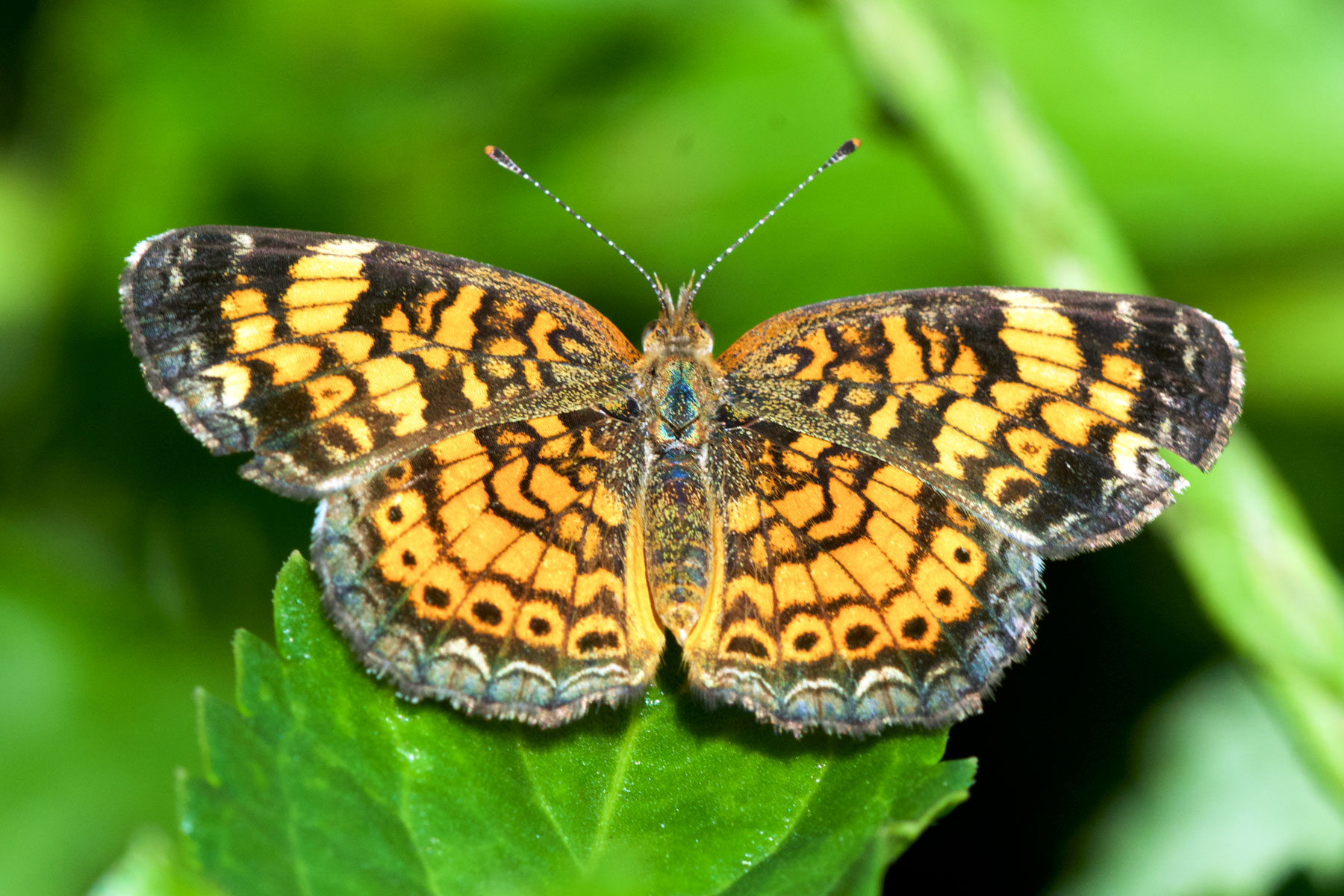
The upper side, at least, is orange and black. The under side is more brown and cream than black:
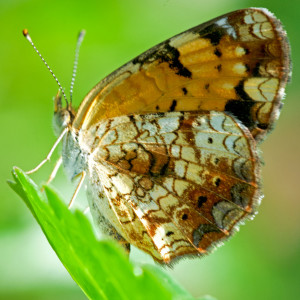
The Phaon Crescent looks remarkably similar; the main difference is that one of the bands of orange in the upper wings in Pearl is cream-colored in Phaon:
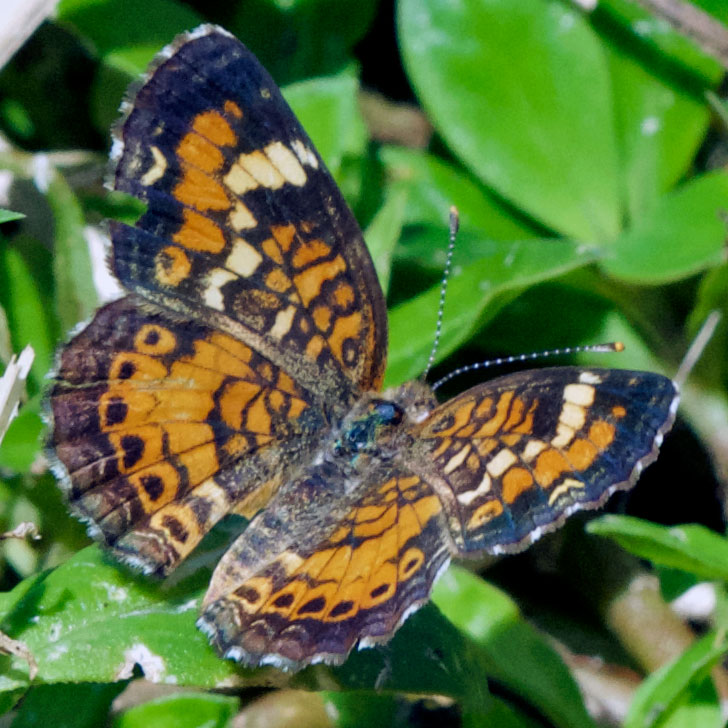
There are plenty of orange-and-black butterflies in this part of the world, of course (Monarch, Queen, Gulf Fritillary), but these two are kind of fun, and they’ve been underrepresented on this website for the past few years.
Both Pearl Crescent and Phaon Crescent are “weedy” butterflies. By this I don’t mean that they are as common as weeds. They’re actually, at least in my yard, somewhat rare. By “weedy” I mean that their larvae eat weeds. Phaon caterpillars eat the leaves of a ground cover known variously as carpetweed, turkey tangle fog fruit, frog fruit, mat grass. Its taxonomic name is Phyla nodiflora. It’s fairly pretty:
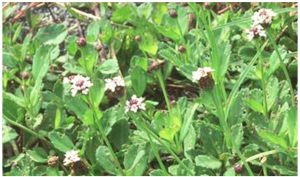
There’s a decent-sized patch of it in the weedy front lawn of the house across the street from me (the one vacant house on the block). For an amazing life-cycle write-up of the Phaon Crescent, check out this page from MOSI outside.
The look-alike butterfly, Pearl Crescent, eats the leaves of flowers in one of the largest families of flowering plants, the Asteraceae. The most common weed in south Florida? Bidens alba, in the Asteraceae.
What I’m trying to say is both butterflies have their larval host plants in my neighborhood, so I can’t decide which butterfly I’m looking at by simple probability. I have to look closely at each one to be sure I know which is which. Hopefully the little lesson above will help you figure yours out as well.
Oh, did I mention? These are rather small butterflies; their wingspan is at most 1-1/4 inches. Yes, you do have to look rather closely.
Etymology
Phyciodes presumably comes from the Greek phykos, meaning (in a somewhat convoluted way) painted. The word actually means seaweed, but it also referred to the products made from it, among which one of the principal ones was cosmetics, rouge. (Seaweeds can be brown and red, right?)
Tharos might be related to the Greek tharsos, courage, or it might be a reference to the ancient Sardinian city of Tharros, but it’s not clear that’s what Drury had in mind when he named this species back in 1773 (he called it Papilio tharos).
Phaon, of course, was the handsomest man in the world, although he didn’t start out that way. One day this old and unhandsome boatman from Mytilene had the good fortune to ferry the goddess of love, Aphrodite herself, from Lesbos to somewhere in Asia Minor. She was disguised as an old crone. Phaon, it is said, would accept no money for the fare. As recompense, Aphrodite gave him an ointment (it’s supposed to have contained myrrh—those of you who remember Monty Python’s Life of Brian know how some people feel about myrrh) to use that turned him young and handsome.
After his transformation, he captured the heart of Sappho, it is said (no mean feat, that), but apparently grew weary of her charms, prompting her to drown herself. His end was no less predictable: Aelian reports (in Varia Historia) that he was slain by a husband he was cuckolding.
As you can imagine, the story of Phaon was rather popular, being told by, among the ancients, Aelian, Ovid (Heroides xv, the epistle from Sappho to Phaon, translated by Alexander Pope), and Lucian.
It was also illustrated on vases:
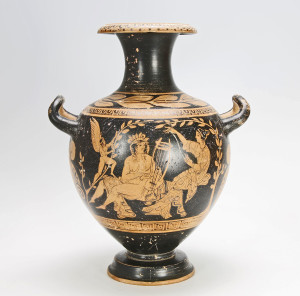
I’ve always loved Greek vases, but the 7500-pound offering price on that one is a bit rich for my blood.
The story was also depicted in paintings (this one by the unofficial semi-official painter of Napoleonic France, Jacques-Louis David):
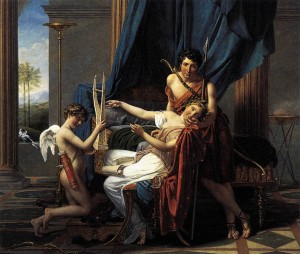
So the Pearl Crescent might translate as courageous painted butterfly, while the Phaon Crescent would be the beautiful painted ferryman.
Go figure!
